Hardcoat anodizing is a Type III, dense uniform aluminum oxide coating to improve wear resistance, adhesive strength, and durability, and resist corrosion damage.
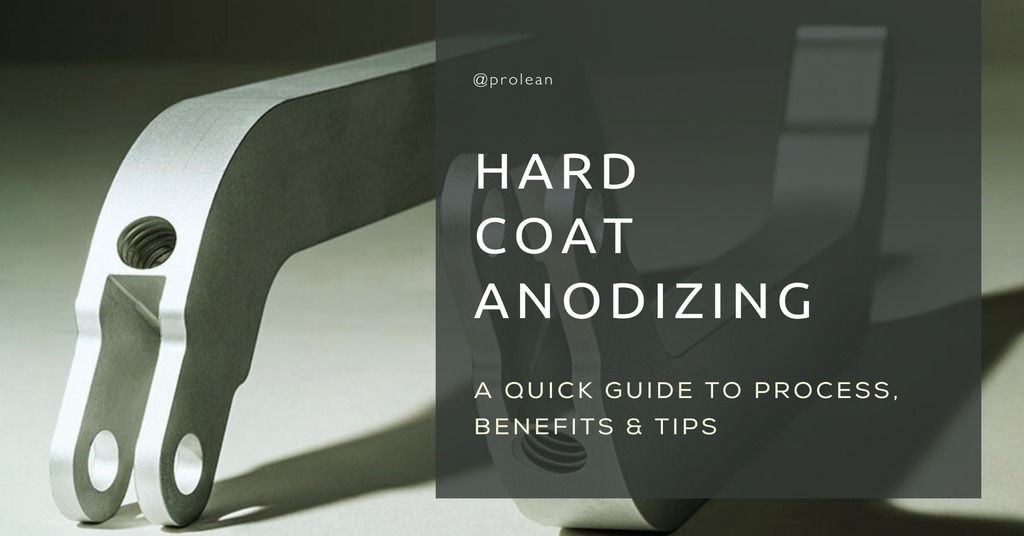
A hard coat, or hard anodize thickness anodizing, is a dense, thick aluminum oxide layer. Aluminum anodizing is classified into three broad categories. Type I is chromic acid anodized with a thickness of 0. 0001’’. Type II, also called sulfuric acid anodize in North America, is described in MIL-A-8625 and has a thickness of 1. It varies between 8 and 25 micrometers or 0.00007 to 0. 001’’. Thin sulfuric anodizing standards are MIL-A-8625 Types II and IIB, AMS 2471 (transparent), AMS 2472 (dyed), BS EN ISO 12373/1 (aesthetic), and BS 3987 (construction).
The third or hard coat anodize is thicker and between 13 to 150 micrometers (0.0005 to 0.006 inches). It uses sulfuric acid and the low temperature of the bath. Thick sulfuric anodizing standards are MIL-A-8625, Type III; AMS 2469; ASTM B580, Type A; ISO 10074; MIL-A-63576; and AMS 2482. Hardcoat anodizing is applied when the parts are to be used in applications where they are likely to wear out and where maximum protection against corrosion is required.
Understanding Hard Coat Anodized
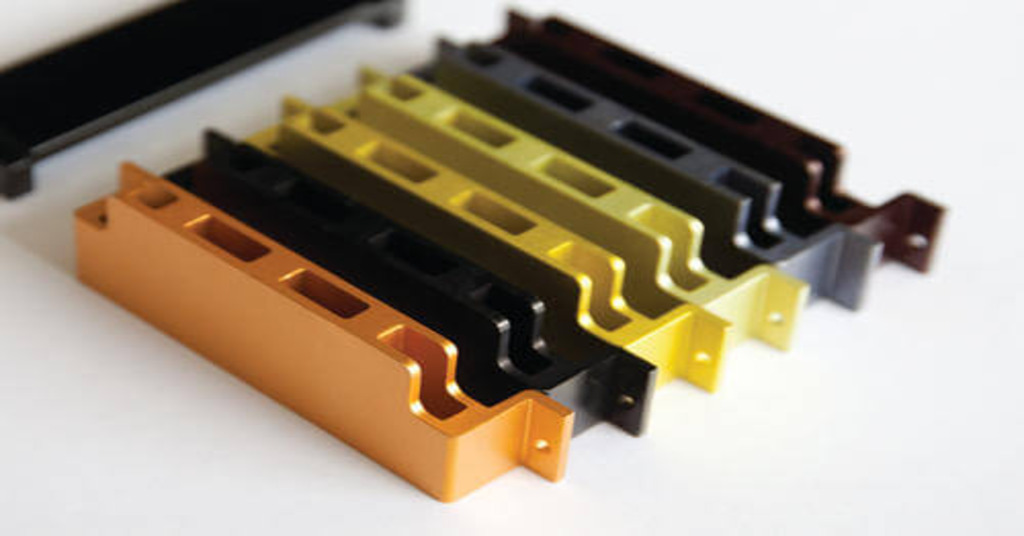
Hard coat anodizing
Hard anodizing orms are a rugged and compact layer of aluminum oxide on the surface of the aluminum parts. This process entails immersing the aluminum in an acid bath and passing an electrical current through it.
The electrolytic process makes the aluminum form its own solid and thick anodic layer, strengthening the coating. While in standard anodizing, the process is done at low voltage and high temperature, Hard Coat Anodizing is done at low temperature and high voltage, and therefore, the surface formed is more rigid, non-porous, and more resistant to wear. In addition to improving the part’s abrasion and corrosion resistance, this method also increases its hardness. Also, it permits the use of dyes, which provide a variety of colors to enhance the appearance of the fabric. (Learn more about alodine vs anodize coatings)
Try Prolean Now!
Aluminum Hard Coat Anodizing Process
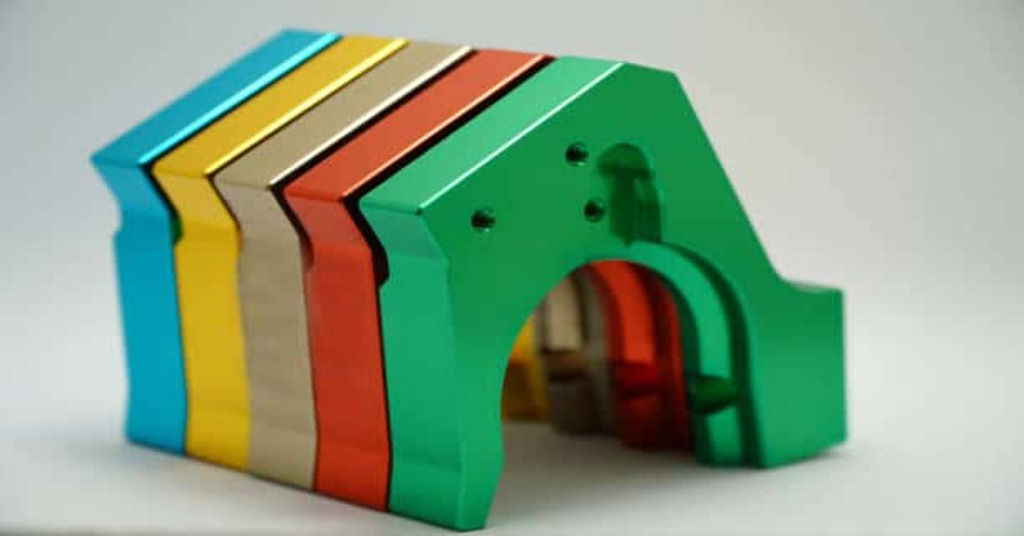
Hard coat anodized aluminum parts
Complex anodizing forms a controlled oxide layer on the aluminum parts. This process is economical and also helps in increasing the life span of the coating. Here’s a process brief of how to hard anodize colors aluminum.
Pre-treatment
The first process in the anodizing aluminum is degreasing and descaling the component. This washes off the grease and other dirt on the element’s surface. Satin finishing is done through etching, which produces a dull surface. It employs hot sodium hydroxide to clean the surface of blemishes. Bright finishing employs phosphoric and nitric acids to give a nearly mirror-like surface. This process refines and purges the aluminum surface.
Process Outline
Hard coat anodizing occurs through the oxidation of the aluminum metal with oxygen. It employs sulfuric acid and low temperatures. Here are the steps:
- Stack the aluminum part to make the anode and put it in the sulfuric acid. The acid bath has an acid and dissolved aluminum content of 180 to 200 grams per liter.
- The sulfuric acid solution is stirred with the help of air bubbles.
- Circulation cools the acid to near freezing point or the temperature at which it becomes more solid. Oxygen for the reaction comes from the sulfuric acid bath.
- Oxygen reacts with aluminum to produce an oxide layer of rugged anodized aluminum. This occurs at a voltage level of 100 volts or more and has a current density of 24 to 40 A/ft2.
- Continue the application of current until the required oxide thickness is grown. The operating temperatures are still between -2 to 0°C.
- The coating is chemically deposited on the substrate, which produces the hard coat anodizing. Thicknesses of hard anodize vary from 0.0005 to 0.006 inches, ranging from 13 to 150 microns. Thicker films are made by higher voltage and using refrigeration tanks.
Which Industries Use Hard Coat Anodizing?
Hard coat anodizing is one of various industries’ most versatile anodizing processes. This technique applies mainly to metals like aluminum, titanium, and magnesium, but anodizing is done chiefly on aluminum. It transforms the external layers of these materials into a corrosion-resistant, non-conductive, and, in some cases, decorative layer. Due to the protection and aesthetic features, hard coat anodizing is popular in different sectors of industries. For instance, the optics industry creates highly resistant and accurate parts for harsh operating environments. In the defense industry, hard coat anodizing provides military equipment with the protection and the resistance to corrosion needed to function effectively in the harshest environments.
Architectural Industry
In the architectural industry, anodized aluminum is used for building exterior and interior decoration; it has a protection function and gives a building a modern look. The medical sector will also benefit significantly from this process since it ensures that the medical instruments used are not only anti-corrosive but also biocompatible and easily sterilizable.
Aerospace
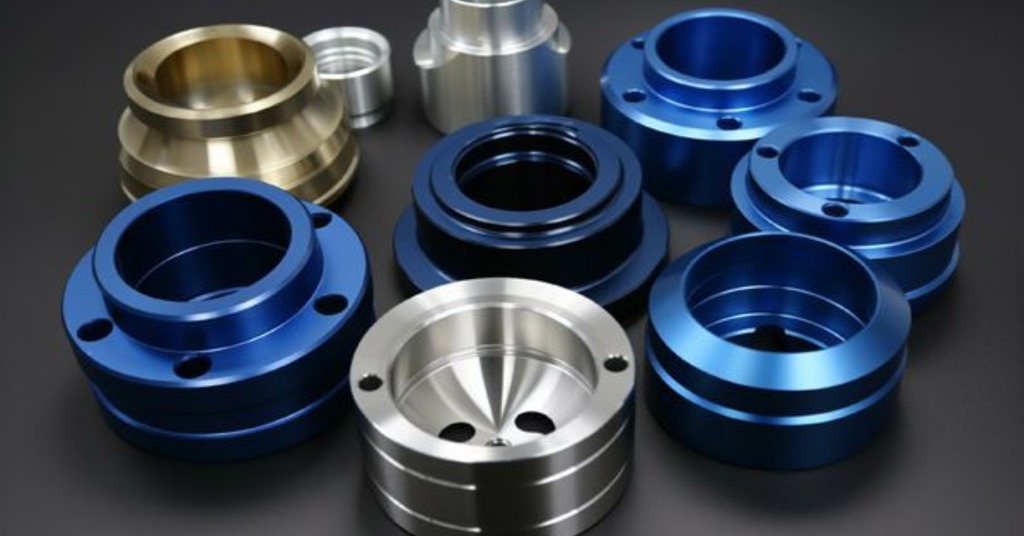
Anodized aerospace parts
Hard coat anodizing is used in the aerospace industry to increase the hardness and anti-corrosive features of the parts, such as landing gears and hydraulic and structural parts of aircraft. These coatings can endure the conditions most expected to exist during the flights, providing lasting operational reliability and safety.
Automotive
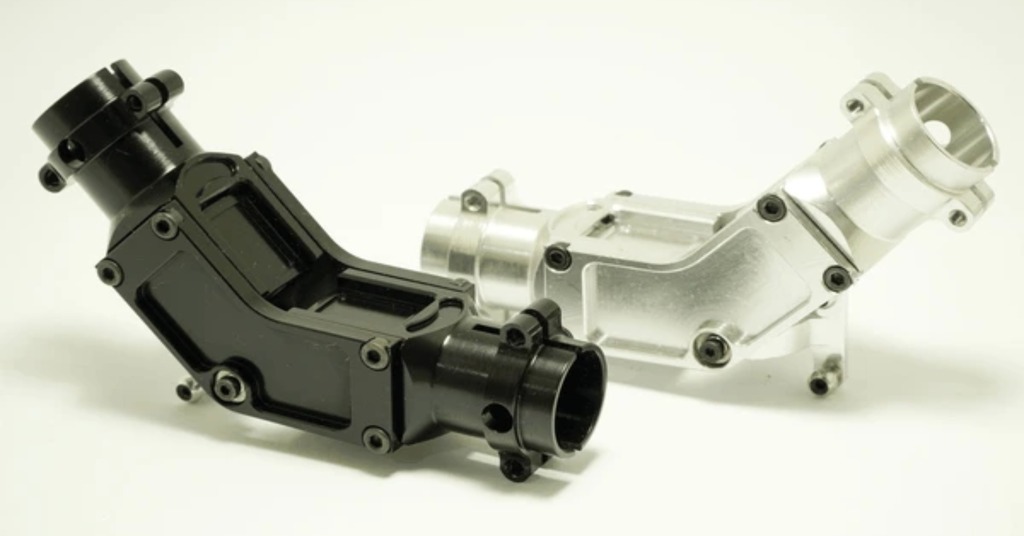
Anodized automotive part
In the automotive industry, hard coat anodizing is very crucial in increasing the wear and protection of the material of cylinders, cylinder liners, and engine interior components. This process increases the durability of the automotive parts that are in contact with friction and mechanical stress; therefore, the performance and reliability of the vehicle are improved.
Medical Instruments
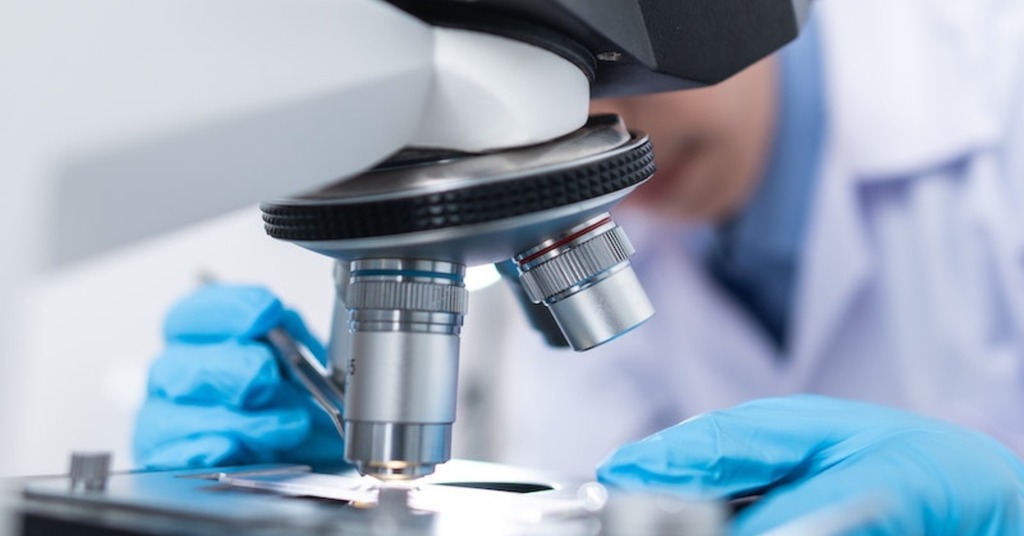
Precision medical anodizing
Medical instruments are coated with hard coat anodizing to increase their hardness, anti-corrosiveness, and biocompatibility. This surface treatment assists in preventing medically sensitive equipment from being influenced by chemicals and damaged so that it is efficient and safe to use in facilities.
Consumer Parts and Hardware
Hard coat anodizing is helpful for consumer products and frequently used hardware, such as hydraulic cylinders and gears. It does this by creating a long-wearing anti-wear layer on these parts, implying that they do not wear out as much and that the efficiency of the equipment is enhanced.
Benefits of Hard Coat Finishing
Hard anodized thickness coatings have various advantages. Some expected benefits include;
- Corrosion Resistance
Hard anodized coatings are very corrosion-resistant; they can easily pass severe tests like 1000 hours 5% salt spray test (ASTM B-117). This makes them suitable for applications where they will be exposed to harsh conditions to last longer without rusting.
- Hardness
The microhardness of hard anodized aluminum is between 500 and 530 VPN. This hardness is uniform and does not depend on the thickness of the coating; it can attain a value of 1.5 mils, which provides the material with an adequate measure of hardness and simultaneously renders it capable of withstanding abrasion and wear.
- Wear Resistance
Hard anodized coatings are ten times more wear-resistant than standard anodized aluminum. This is well illustrated by tests in which rugged anodized aluminum has a relatively low wear rate compared to cyanide case-hardened steel under the same abrasion process.
- Tolerances
Hard anodizing results in a thin and consistent coating layer, which also follows the contour of the part and can be made to a fragile tolerance. This makes it suitable for use in parts that have complicated shapes because it will give an even layer and shield.
- Heat Resistance
The areas coated with hard anodized coating can tolerate a short time at temperatures up to 2000 degrees centigrade. This heat resistance is due to the coating’s nonreactive nature. Therefore, it can be used in applications where the coating must be exposed to high temperatures and functioning properly.
- Electrical Properties
Hard anodized coatings have good electrical insulation and are as good as glass and porcelain. These materials are renowned for having very high resistivity; therefore, they can be used in electrical parts and uses where insulation is required.
- Thermal Properties
Hard anodized coatings have low conductivity, expansion rates, and high thermal emissivity. The emissivity approach of a black body, with thickness and heat dissipation, is enhanced without needing further dyeing.
These characteristics make hard anodized coatings the most preferred by industries that need high performance in hardness, wear, heat, and electrical conductivity.
Try Prolean Now!
Factors Considered For Efficient Hard Coat Anodizing
When deciding on hard coat anodizing, some aspects should be considered, such as compatibility of the material, quality of the surface preparation, and, of course, the cost of the process versus the advantages it provides.
Material Selection
Hard coat anodizing is most suitable for aluminum substrates because of their favorable response to the process. Other types of metals that can also be anodized using the hard coat anodizing are;
- Magnesium
- Titanium
- Stainless steel
- Copper
These materials have natural oxide layers and a high affinity with oxygen to enhance the strength and corrosion resistance of the metal.
Surface Preparation
It is very crucial to have a good and smooth surface ready for anodizing to be carried out. This preparation reduces the possibility of achieving a non-uniform coating thickness or poor bonding to the coated, improving the part’s efficiency and appearance.
Cost and Time Efficiency
Although hard coat anodizing is more expensive and time-consuming compared to other surface treatments, the benefits it usually provides offset the costs. It improves the strength and reliability of the component in conditions where it is subjected to high stress; therefore, it is suitable for use in critical applications. (Read more about anodizing vs powder coating)
Specific Standards for Hard Coat Anodizing
Here are the hard anodizing standards involved in the anodizing process;
- MIL-A-8625, Type III: Prescribes standards of hardness and corrosion in different sectors of the economy.
- AMS 2469: Sets technical specifications for the anodizing of aluminum alloys.
- ASTM B580, Type A: Establishes guidelines on how anodic coatings should be done on aluminum surfaces.
- ISO 10074: Provides global standards on the hard coat finishing process.
- MIL-A-63576 (PTFE Sealed): Describes procedures for sealing PTFE (Polytetrafluoroethylene) to increase lubricity and wear properties.
- AMS 2482 (PTFE Sealed): Offers more requirements for PTFE sealing on anodized surfaces to meet the needs of low friction applications.
Conclusion
Hard coat finishing is one of the optimal methods for strengthening metal parts and their resistance to wear and corrosion. This process applies to many industries, such as aerospace and medical instruments, because it increases the parts’ life span and efficiency. In cases where there is a requirement for a hard surface treatment of parts that will be exposed to demanding conditions, hard coat anodizing can be relied on.
Contact Prolean, your go-to company, for all your hard coat anodizing service, from hard anodized aluminum to several other metals like titanium and stainless steel. We have clear or black Type 3 hard coat colored parts for any project. Get in touch with us and get a free, instant quote today. At Prolean, we are committed to providing quality parts that are delivered fast and with a very short turnaround.
FAQs
Q1. How Long Does Hard Coat Anodizing Last?
The durability of hard coat anodizing depends on many factors and can be relatively short or quite long. Depending on the conditions, it may take several decades. This depends on the environmental conditions and the amount of abrasion the surface will likely undergo. In gentle environments, it will last longer. In extreme conditions, it may deteriorate faster. This makes it a long-term solution for many applications.
Q2. How Long Does the Hard Coat Anodizing Process Take?
The time taken for hard coat anodizing depends on the following factors: The thickness of the coating, voltage, current density, and concentration of the electrolyte used. The water temperature of the bath also influences it. In general, a specific formula is applied to calculate the time required. This makes the results to be accurate and consistent in every experiment that is conducted.
Q3. Do Hard Coat Anodized Surfaces Rust?
No, hard-coat anodized surfaces do not rust. Rust usually occurs in iron and steel, while anodizing forms a layer on the surface of the aluminum. This layer helps avoid the oxidation that results in rusting of the metal. Therefore, anodized aluminum stays non-corrosive and strong for a long time.
Q4. Is Hard Coat Finishing a Permanent Solution?
No, it’s not permanent, but it provides durable protection to the surface of the aluminum material. The anodized layer is not permanent and may gradually wear off or get damaged. It is also influenced by environmental factors within or outside the business organization. Nevertheless, it remains a long-lasting and efficient treatment for several years. The exposed aluminum will naturally develop its oxide layer but not as strong as the hard coat.
Q5. Are Hard Coat Anodized Materials Electrically Conductive?
No, the anodized layer is not conductive electrically. Even though the base metal is conductive, the anodized layer on the surface is an insulating layer. This makes anodized surfaces very important in applications where electrical insulation is required.

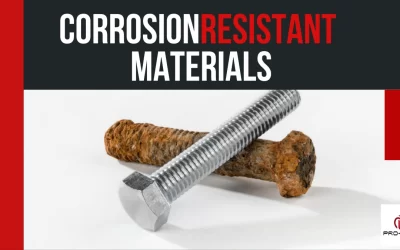
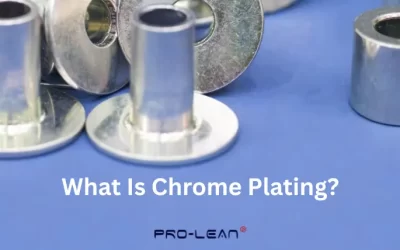
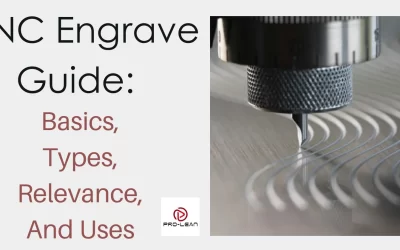
0 Comments